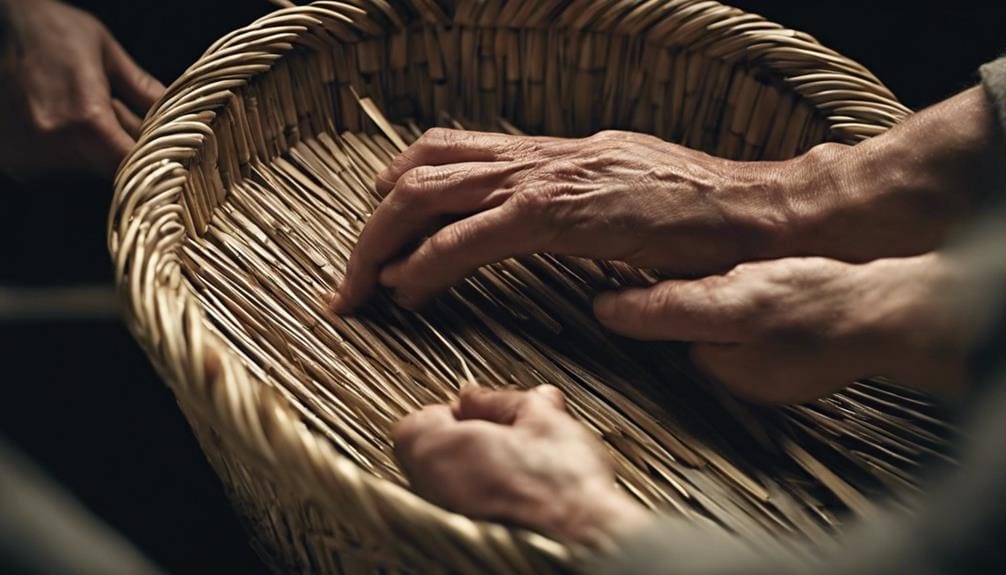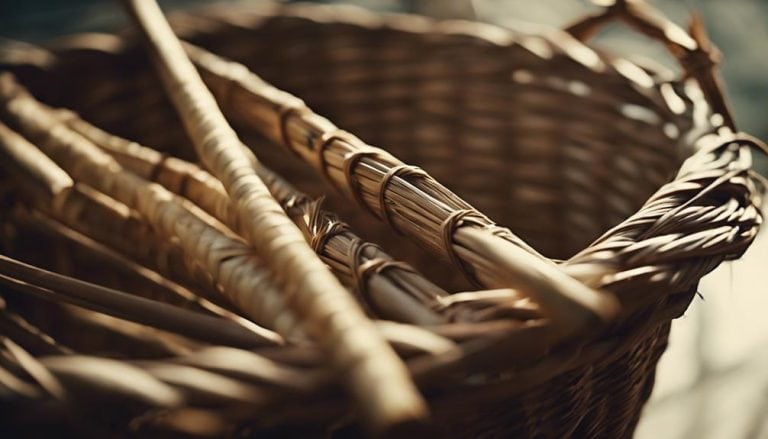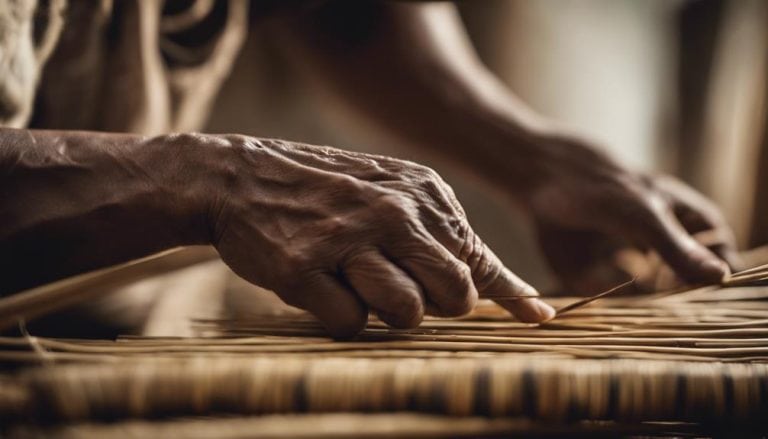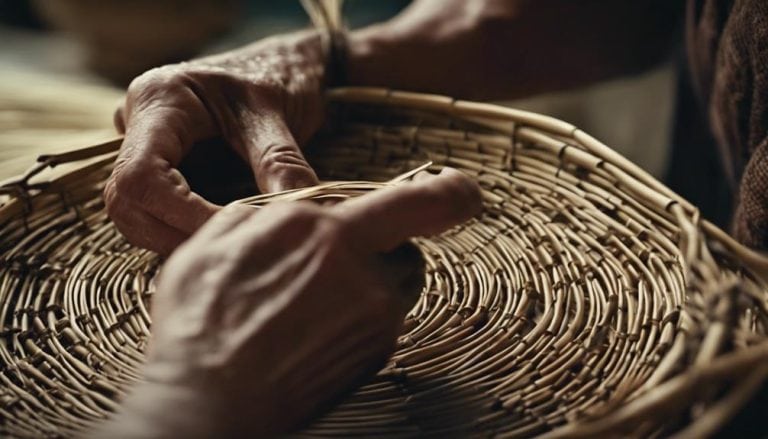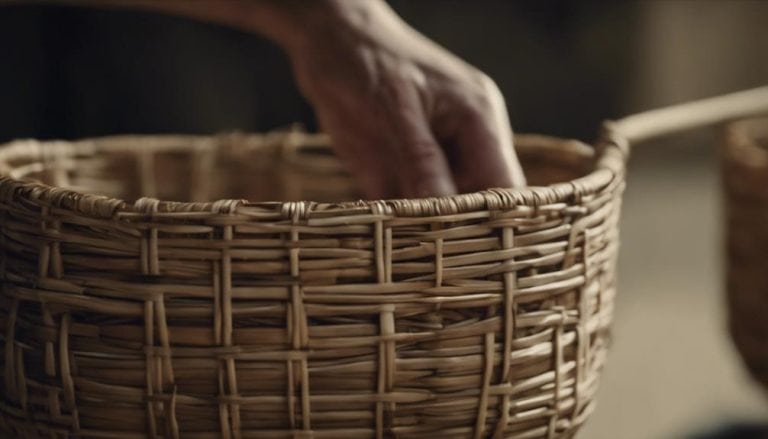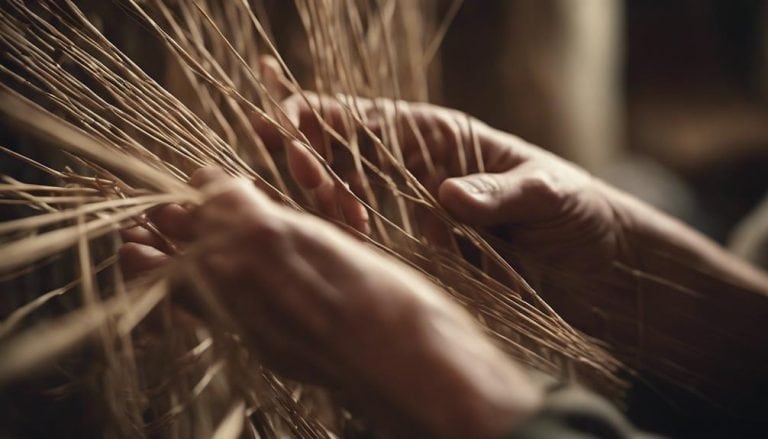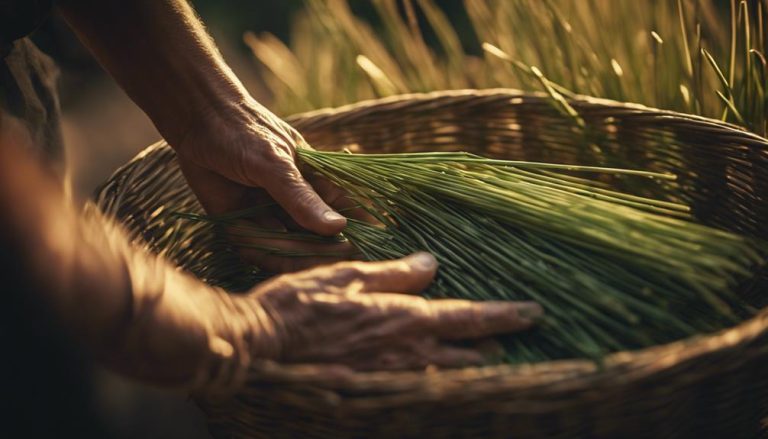Basket Weaving: Detailed Guide to Rush Reeds
Like a weaver carefully selecting strands for a masterpiece, navigating the intricate world of rush reeds in basket weaving can be challenging and rewarding. The subtle differences in rush varieties can significantly impact the final product’s strength and appearance. Understanding these nuances is essential for creating durable and aesthetically pleasing baskets.
As we explore the detailed guide to rush reeds, we will uncover the secrets behind selecting the right ones for your next weaving project and discover how these choices can elevate your basketry to new heights.
Learn the intricate art of crafting with natural materials in a detailed guide to rush reeds for basket weaving. Explore the techniques and patterns to create beautiful and functional baskets.
Key Takeaways
- Rush reed selection impacts durability and appearance, offering customization possibilities.
- Preparation involves soaking, trimming, and dyeing rush reeds for flexibility and creativity.
- Master weaving techniques like lashing and shaping for intricate and colorful basket designs.
- Preserve rush baskets by avoiding direct sunlight, storing properly, and applying protective coatings.
Selecting the Right Rush Reeds
When embarking on a basket weaving project, the key to success lies in meticulously selecting the right rush reeds that will bring strength, flexibility, and artistic flair to your creation. The thickness of the rush reeds plays a crucial role in determining the overall durability and appearance of your woven piece. Opting for thicker rush reeds can add robustness to your basket, ensuring it withstands the test of time with grace.
Moreover, color customization is where your creativity can truly shine. Dyeing rush reeds opens up a world of possibilities, allowing you to personalize your project to match your style or décor. Whether you prefer earthy tones for a rustic feel or vibrant hues for a modern touch, customizing the color of your rush reeds can elevate your weaving to a whole new level of artistry.
In my experience, paying attention to these details during the rush reed selection process is essential for achieving a weaving project that meets and surpasses your expectations.
Tools and Materials Needed
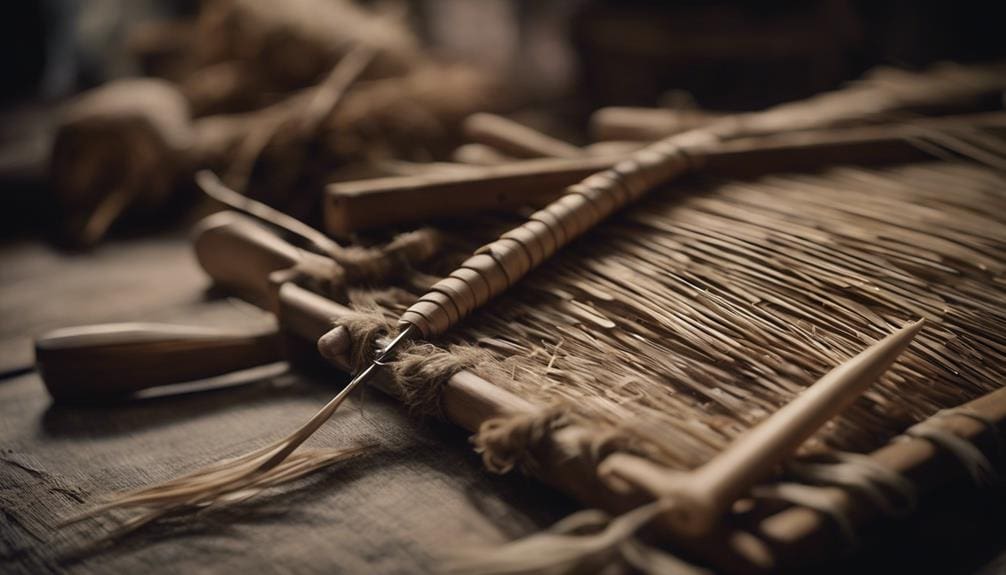
Paying close attention to the tools and materials needed is crucial for ensuring a successful basket weaving project with rush reeds. When embarking on a weaving journey with rush reeds, I always ensure essential tools like weaving needles, sharp scissors, and a water basin are within reach. These tools are indispensable for manipulating the rush reeds and crafting intricate designs. Additionally, having a variety of dyeing materials on hand allows for creating vibrant colors that can elevate the aesthetics of the final piece.
Weaving techniques with rush reeds require precision and patience. The rush reeds’ natural flexibility and smooth texture make them ideal for intricate weaving patterns. Before diving into weaving, I prepare my rush reeds by soaking them in water to enhance their flexibility. This step ensures the rush reeds are easier to manipulate and weave, resulting in a cohesive and sturdy basket structure.
Incorporating various dyeing methods can further enhance the visual appeal of the woven basket. Experimenting with different dyeing techniques opens possibilities for creating unique and personalized designs. Combining weaving techniques with creative dyeing methods allows me to bring my basket weaving projects to life with individuality and flair.
Preparing Rush Reeds for Weaving
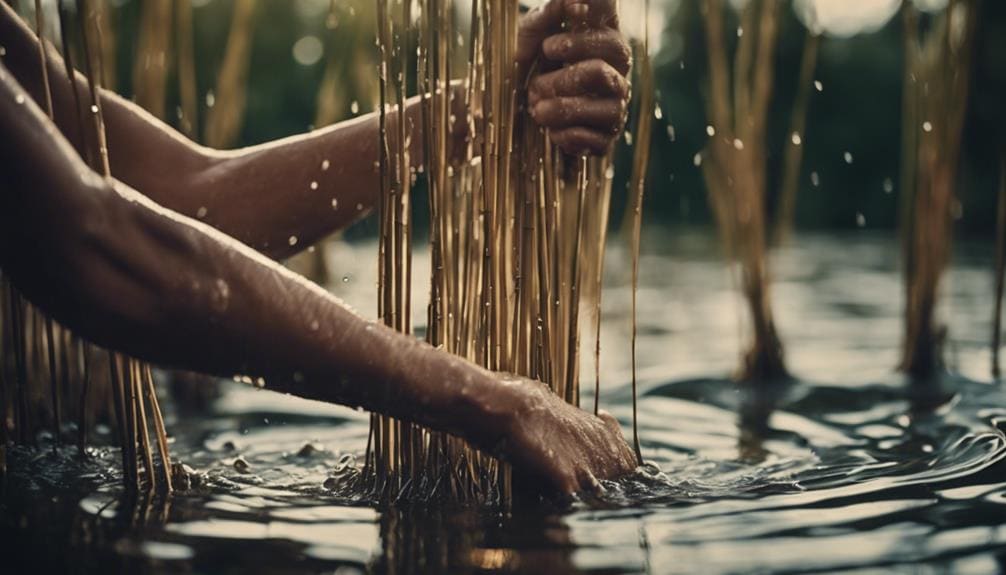
I immerse them in warm water to prepare rush reeds for weaving, enhancing their flexibility and pliability. This soaking technique softens the reeds, making them easier to manipulate and weave into intricate patterns. After soaking, I trim the rush reeds to my desired length using sharp scissors, ensuring they are uniform for a neat finish. Additionally, I split larger rush reeds into thinner strips to weave more detailed designs, adding a touch of creativity to my basketry.
Preparation Steps:
- Soak Rush Reeds: Submerge rush reeds in warm water to increase flexibility.
- Trim to Length: Use sharp scissors or knives to cut rush reeds to the desired size.
- Split into Strips: Split larger reeds into thinner strips for intricate patterns.
Before weaving, consider dyeing the rush reeds to introduce vibrant colors and visual interest to your basket. Remember to let the reeds dry completely to prevent mold or mildew growth during weaving.
Basic Basket Weaving Techniques
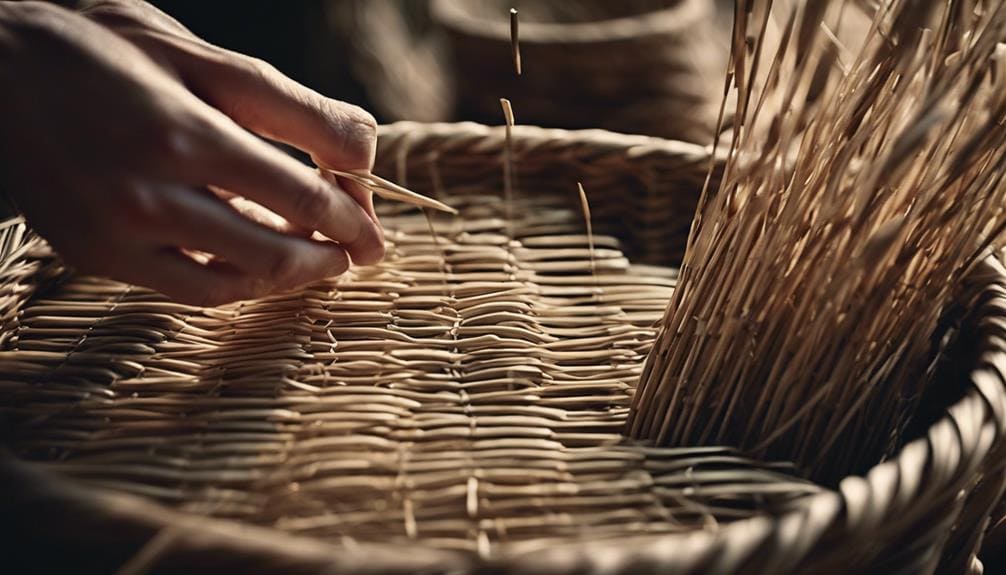
Immersing rush reeds in warm water before weaving is fundamental in enhancing their flexibility for creating intricate basket designs. This process allows the rush reeds to become more flexible, making them easier to weave into complex patterns. When starting with basic basket weaving techniques, paying attention to color combinations and intricate patterns is crucial to bringing your basket to life.
Experimenting with different hues and weaving styles can produce stunning results that reflect your creativity. Remember to focus on techniques like weaving, lashing, and shaping the rush reeds as you begin weaving. These methods play a significant role in determining your basket’s final look and structure. Should you encounter weaving mistakes along the way, don’t fret.
Troubleshooting techniques such as unraveling the mistake or adding extra weaves can often rectify the issue without starting from scratch. By mastering these fundamental weaving techniques, you’ll be well on your way to creating beautiful baskets that showcase your skills and imagination.
Advanced Weaving Patterns
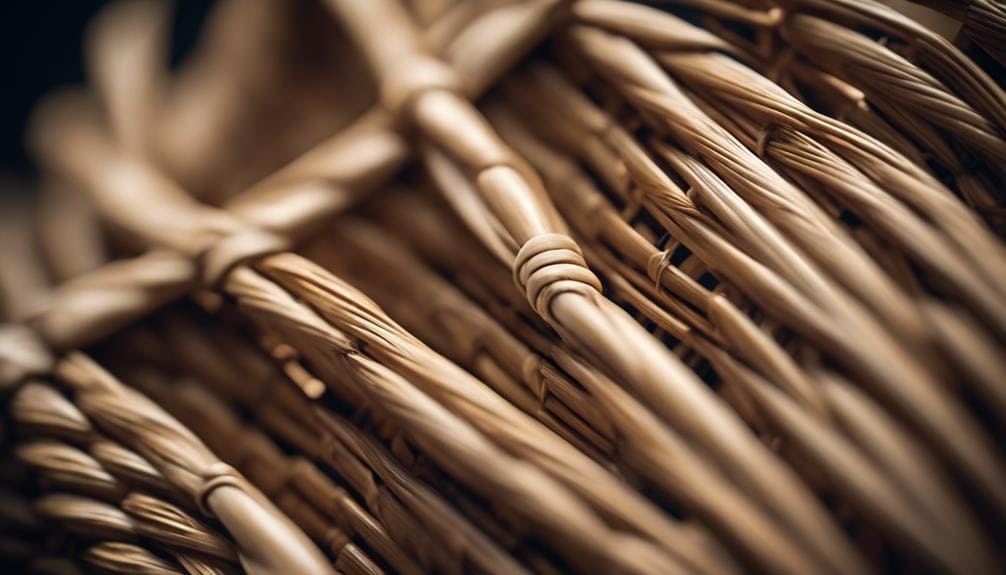
Exploring the realm of advanced rush reed weaving unveils a tapestry of intricate designs and sophisticated techniques that elevate the art of basket making to new heights. When delving into advanced weaving patterns, here are some insights to guide you through this creative journey:
- Creative Inspirations: Drawing inspiration from nature, traditional motifs, or personal experiences can breathe life into your advanced rush-red designs—experiment with incorporating unique shapes and patterns to infuse your baskets with individuality.
- Design Challenges: Advanced rush reed weaving presents design challenges that require patience and precision. Mastering techniques like twill weaves, herringbone patterns, and intricate borders can be rewarding and demanding. Embrace these challenges as opportunities for growth and skill enhancement.
- Expert Tips: Seek guidance from experienced weavers, attend workshops, and explore online resources to refine your craft. Learning from seasoned artisans and practicing consistently are key elements in mastering the art of advanced rush reed weaving.
Finishing Touches and Trimming
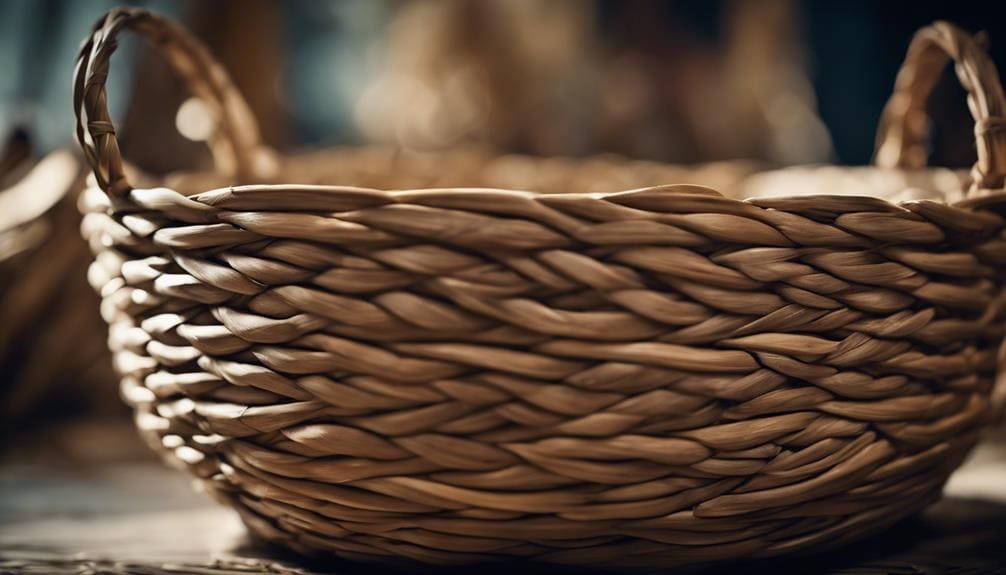
As we approach the final stages of crafting a beautifully woven rush reed basket, attention to detail in the finishing touches and trimming becomes paramount to achieving a professional and polished look. Reed maintenance is essential at this stage to ensure the basket’s longevity and aesthetics.
Trimming techniques play a crucial role in this process, involving carefully snipping excess reed ends close to the weaving. It is vital to neatly trim any protruding reed to enhance the appearance and durability of the finished product. To achieve a clean finish, tuck and secure loose ends, using sharp scissors or shears to trim the reed without damaging the overall weave.
In addition to proper trimming, incorporating decorative accents can elevate the basket’s visual appeal. By paying attention to the finer details during this stage, you can create a basket that serves a functional purpose and stands out as a work of art. Remember, the finishing touches and trimming are the final steps that will transform your rush reed creation into a masterpiece.
Maintaining and Preserving Rush Baskets
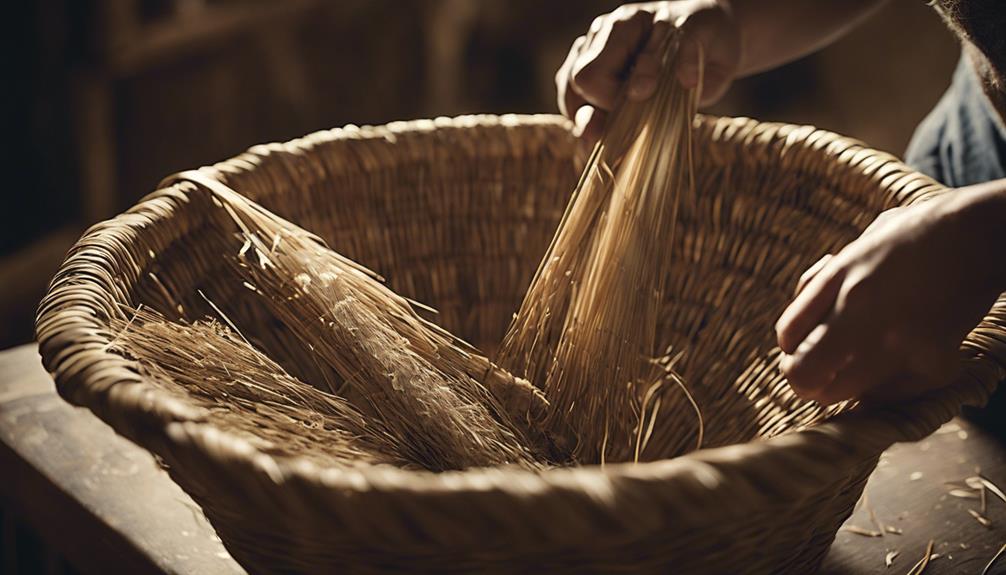
To maintain the longevity and pristine condition of rush baskets, regular dusting and gentle cleaning with a soft brush or cloth are essential practices.
Here are some tips I’ve gathered from my experience that can help you preserve your rush baskets effectively:
- Cleaning Techniques: Dust your rush baskets regularly using a soft brush or cloth to prevent the accumulation of dirt and debris. For stubborn stains, lightly dampen the cloth with water, but avoid soaking the rush material to prevent damage.
- Preservation Methods: Avoid exposing your rush baskets to direct sunlight for extended periods, as this can lead to fading and weakening of the fibers. Store your baskets in a cool, dry place away from moisture and humidity to prevent mold or mildew growth.
- Protective Coating: Consider applying a protective coating such as wax or clear varnish to your rush baskets to enhance their durability and resistance to wear. This coating can help maintain the natural beauty of the rush while providing an extra layer of protection against daily use.
Frequently Asked Questions
How Long to Soak Reeds for Basket Weaving?
I soak reeds for basket weaving for at least 30 minutes in warm water. Longer times may be needed for thicker reeds. Soaking helps prevent breakage, ensuring pliability. Proper soaking is crucial for achieving desired shapes and ease of manipulation during weaving.
How Do You Prepare Rushes for Weaving?
When preparing rushes for weaving, proper selection is crucial for a smooth process. Harvesting tips ensure quality rushes. Drying thoroughly is essential. Rushes soaked and cut to size enhance flexibility. Weaving challenges are minimized with well-prepared rushes.
What Are the 4 Techniques of Basket Weaving?
I’ve mastered the art of basket weaving with the 4 techniques: plaiting, coiling, twining, and wickerwork. Among them, twining creates a sturdy structure by weaving two elements in an over-under pattern, while coiling stitches together grasses or reeds.
Does Basket Reed Go Bad?
Absolutely, basket reed can spoil if not stored correctly. Preserving reeds is key. I once left mine in a damp shed, and they grew mold. Remember, proper storage tips are vital: cool, dry, and dark.
Conclusion
After diving into the world of rush reeds and mastering the art of basket weaving, I have discovered that this ancient craft is truly a blend of precision and creativity. The theory that practice makes perfect has proven itself true as I weave intricate patterns and designs, each stitch telling a story of patience and dedication. As I put the finishing touches on my rush basket, I am filled with a sense of accomplishment and pride in my newfound skill.

